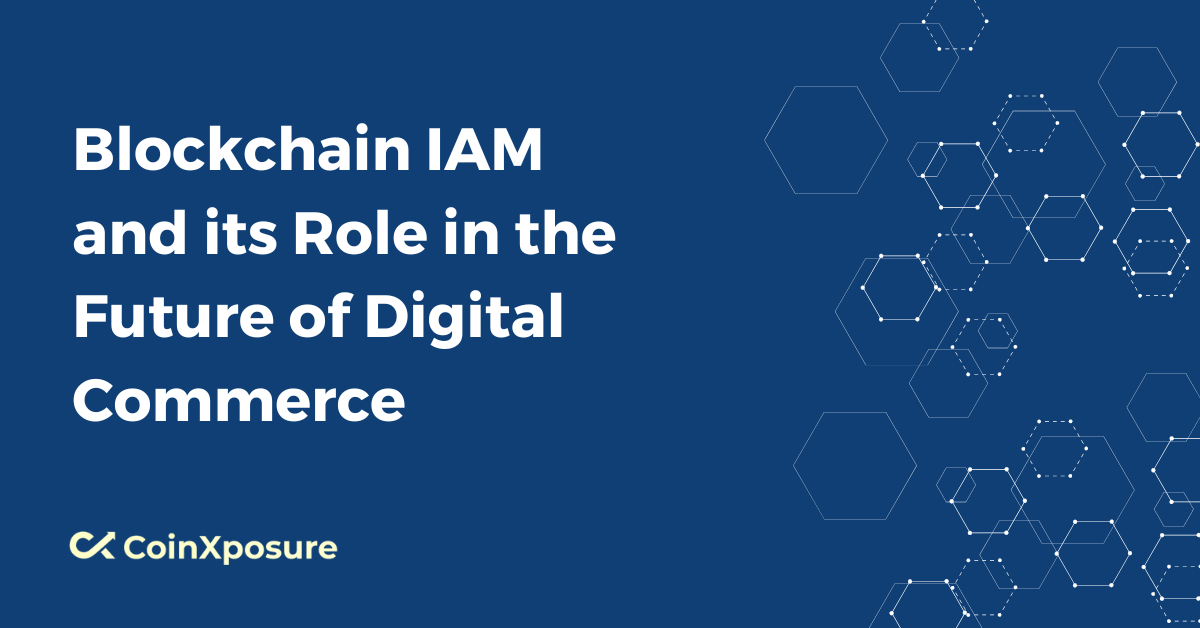Blockchain Identity and Access Management (IAM) stands at the forefront of revolutionizing digital commerce by redefining how individuals and entities establish and manage their online identities.
Unlike traditional IAM systems, which often rely on centralized authorities, blockchain IAM leverages blockchain technology’s decentralized and tamper-resistant nature.
This article explores the key components of blockchain IAM and delves into its pivotal role in enhancing security, user control, and the overall efficiency of digital commerce.
As we navigate the evolving landscape of technology, the intersection of blockchain IAM and digital commerce holds the promise of fostering trust, privacy, and seamless interactions in the digital realm.
Key Components of Blockchain IAM
Here are some key components of blockchain IAM:
- Decentralized Identity
- Smart Contracts
- Consensus Mechanisms
Decentralized Identity
- Definition: Unique digital identities are established without reliance on central authorities.
- Importance: Reduces identity theft risk and enhances user control over personal information.
Smart Contracts
- Overview: Self-executing contracts encoded on the blockchain that automate access control processes.
- Role: Facilitates secure and programmable management of identity-related transactions and permissions.
Consensus Mechanisms
- Role: Ensures secure identity validation by leveraging the blockchain consensus process.
- Impact: Enhances reliability and trust in the identity verification process.
These components collectively form the foundation of Blockchain IAM, providing a decentralized, automated, and secure framework for managing digital identities in the ever-evolving landscape of digital commerce.
Advantages of Blockchain IAM in Digital Commerce
Here are some advantages of blockchain IAM in digital commerce:
- Enhanced Security
- User Control and Privacy
- Interoperability
Enhanced Security
Immutable Records: Blockchain’s tamper-resistant nature ensures that it cannot be altered once identity data is recorded, reducing the risk of unauthorized access and identity fraud.
User Control and Privacy
Empowerment: Users have greater control over their identities, deciding who can access specific information, thereby minimizing data exposure.
Permissioned Access: Blockchain IAM enables fine-grained permission control, allowing users to manage and share only necessary information.
Interoperability
Compatibility: Blockchain IAM systems are designed to be interoperable across different platforms and systems, streamlining identity verification processes in diverse digital commerce ecosystems.
These advantages collectively contribute to a more secure, user-centric, and efficient digital commerce landscape, addressing critical challenges associated with traditional IAM systems.
Challenges and Considerations of Blockchain IAM in Digital Commerce
Here are some challenges and considerations of blockchain IAM in digital commerce:
- Scalability
- Regulatory Compliance
- Standardization Efforts
Scalability
Processing Volume: As digital commerce grows, scalability becomes challenging for blockchain IAM systems, requiring efficient solutions for large-scale identity verification transactions.
Regulatory Compliance
Legal Frameworks: Navigating diverse global regulations about digital identity poses challenges, requiring adherence to privacy laws and compliance standards.
Standardization Efforts
Lack of Standards: The absence of widely accepted standards for blockchain IAM can hinder interoperability, necessitating collaborative efforts to establish industry norms.
Navigating these challenges demands continuous innovation and collaboration within the blockchain IAM space, ensuring a balance between technological advancements and regulatory compliance in the dynamic landscape of digital commerce.
Conclusion
Blockchain Identity and Access Management (IAM) represents a transformative force in the landscape of digital commerce. With its emphasis on decentralization, security, and user control, blockchain IAM addresses longstanding challenges associated with traditional identity management systems.
As we look ahead, integrating blockchain IAM with emerging technologies, ongoing standardization efforts, and its evolving role in the broader digital transformation landscape signal a future where trust, privacy, and efficiency converge seamlessly in digital commerce.
This technology is a solution to current challenges and a catalyst for redefining how individuals and entities establish, manage, and secure their identities in digital transactions’ dynamic and interconnected world.
The journey of blockchain IAM unfolds as a promising chapter in the ongoing narrative of a secure, user-centric, and interoperable digital future.












